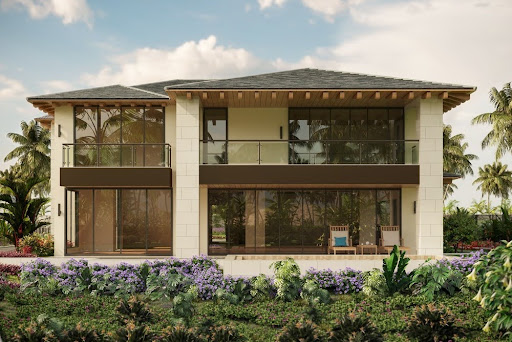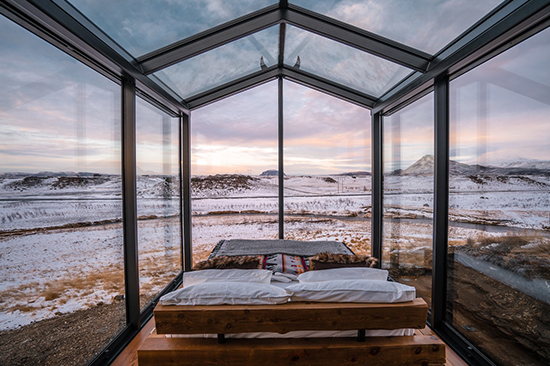Beyond the Blueprint: The Evolution of Exterior 3D Rendering Services

Introduction to Exterior 3D Rendering Services
In architectural design and real estate, the evolution of exterior 3D rendering services marks a significant milestone. These services have transformed how architects, developers, and clients visualize and conceptualize building projects, moving far beyond traditional blueprints and elevations.
Defining Exterior 3D Rendering
Exterior 3D rendering refers to creating three-dimensional digital models of building exteriors. These models are detailed, accurate, and often photorealistic, visually representing how a building will look after construction. Unlike traditional 2D blueprints, 3D renderings offer a more comprehensive and immersive view, encompassing textures, colors, lighting, and the surrounding environment. This holistic approach allows stakeholders to understand the final product, facilitating better decision-making and communication
The Shift from Traditional Blueprints
Traditionally, architectural plans were presented as 2D blueprints, which, while informative, left much to the imagination. These plans required clients and stakeholders to mentally translate flat drawings into physical spaces, a skill only some possess. The shift to 3D rendering services has democratized this process, making architectural concepts accessible and understandable to everyone involved, regardless of their technical expertise.
Historical Overview of 3D Rendering in Architecture
The journey of 3D rendering in architecture is a story of technological evolution and creative ingenuity, reflecting the industry’s quest for more effective and efficient design tools.
Early Stages and Digital Transformation
The roots of 3D rendering in architecture can be traced back to the 1980s with the advent of computer-aided design (CAD). Initially, CAD was primarily used for 2D drafting, but as technology advanced, it paved the way for developing 3D modeling software. Early versions of 3D rendering tools were rudimentary by today’s standards, offering limited functionality and requiring substantial computing power, a significant barrier to widespread adoption.
Milestones in 3D Rendering Technology
As computing technology advanced, so did 3D rendering software. The 1990s and 2000s saw significant milestones with the introduction of software like AutoCAD, SketchUp, and Revit. These tools offered architects more flexibility and creativity in designing building exteriors, allowing for incorporating intricate details and realistic textures. For example, the release of SketchUp in 2000, with its user-friendly interface and powerful modeling capabilities, marked a turning point, making 3D rendering more accessible to professionals and hobbyists alike.
The rise of the internet and cloud computing further accelerated the development of 3D rendering services. Cloud-based platforms enabled easier collaboration and sharing of 3D models, breaking down geographical barriers and fostering a more collaborative approach to architectural design. Platforms like Autodesk’s BIM 360 have become instrumental in streamlining workflow and project management, showcasing the integration of 3D rendering with broader project management tools.
Technological Advancements and Software Innovations
Significant innovations in software capabilities and the integration of new technologies have marked the continued advancement of 3D rendering technology.
Breakthroughs in 3D Modeling Software
Recent years have seen groundbreaking developments in 3D modeling software, with programs becoming more powerful, intuitive, and detailed. These tools now offer features like advanced texture mapping, dynamic lighting simulations, and real-time rendering. For instance, software like Lumion allows architects to create high-quality renders quickly, significantly reducing project turnaround time.
The level of detail and realism achievable today is far from the early days of 3D rendering. Modern software can accurately simulate complex materials like reflective glass or rough stone, incorporating factors like weathering and aging to create incredibly lifelike renders.
Impact of VR and AR on Rendering Services
Virtual Reality (VR) and Augmented Reality (AR) have introduced new dimensions to 3D rendering services. VR allows clients and stakeholders to immerse themselves in a virtual model of the building, providing a sense of scale and space unmatched by traditional renderings. For example, using VR headsets, users can take virtual tours of a building, experiencing it as if they were physically present. AR, on the other hand, overlays digital renderings in the real world, enabling architects and clients to see how a new building will fit into an existing space. Tools like ARCore and ARKit have been instrumental in integrating AR into architectural practices.
The Role of AI in Automating Rendering Processes
Artificial Intelligence (AI) is starting to play a role in automating and optimizing various aspects of the rendering process. AI algorithms can assist in tasks such as optimizing lighting conditions, generating realistic textures, and suggesting design modifications. This automation speeds up the rendering process and opens up new possibilities for design efficiency and creativity. AI-driven tools are becoming more prevalent in software suites, offering architects new ways to enhance their designs and workflows
Changing Dynamics in Architectural Presentation
The progression of exterior 3D rendering services has drastically altered the dynamics of architectural presentations, influencing how projects are showcased and communicated to clients and stakeholders.
From Static Images to Interactive Visualizations
The evolution from static 2D images to dynamic 3D visualizations represents a paradigm shift in architectural presentations. Previously, architects relied on flat drawings and physical models to present their designs, which often left out critical details and failed to convey the full scope of a project. With the advent of 3D rendering, these limitations have been overcome. Modern rendering services provide interactive, detailed visualizations that offer a comprehensive view of a project, encompassing every angle and aspect of the design.
Interactive features, such as the ability to navigate around and inside the building, have become a standard offering in many rendering packages. Companies like Unity Technologies have developed tools that enable architects to create immersive, interactive 3D models that can be explored in real-time, either on a screen or through a VR headset. This interactivity enhances the presentation experience and enables clients to gain a deeper understanding and connection with the project.
Enhancing Client Engagement and Communication
3D renderings have significantly improved client engagement and communication. The ability to see a realistic representation of a project helps set clear expectations and reduces the chances of miscommunication. Clients can now provide more informed feedback, leading to a more collaborative and efficient design process.
This enhanced communication is precious in the early stages of a project, where changes are more feasible and less costly. For instance, a client might request adjustments to the façade or landscaping after seeing the initial renderings, which can be quickly implemented and presented for approval. This iterative process, facilitated by 3D rendering, ensures that the final design aligns closely with the client’s vision and requirements.
The Role of 3D Renderings in Marketing and Sales
In real estate marketing and sales, 3D renderings have become indispensable tools. High-quality, realistic renderings are often the centerpiece of marketing campaigns for new developments, helping to attract potential buyers and investors. These visualizations can be used in various marketing materials, including brochures, websites, and billboards, providing a compelling visual representation of the property.
The impact of 3D renderings on sales can be significant. According to a study by the National Association of Realtors, listings with 3D tours receive 87% more views than those without. In the case of pre-sales for developments under construction, 3D renderings are often the primary means for buyers to understand and appreciate the property, making them critical for successful sales outcomes.
Challenges and Solutions in Modern 3D Rendering
Despite the advancements and benefits of 3D rendering, there are challenges that architects and rendering professionals face in creating and utilizing these visualizations.
Navigating Complexity in Architectural Designs
Modern architectural designs often feature complex geometries and intricate details, which can be challenging to depict accurately in a rendering. To address this, professionals are turning to advanced software that offers greater flexibility and precision in modeling. Tools like Autodesk 3ds Max and Rhinoceros 3D are widely used for their ability to handle complex shapes and forms.
Integrating BIM (Building Information Modeling) data into the rendering process has become a popular solution for managing complexity. BIM provides a rich dataset about the building’s components, which can be used to create more accurate and detailed renderings. Revit allows for seamless integration between BIM data and 3D rendering, streamlining the process and enhancing the final output.
Achieving Realism and Accuracy
Creating realistic and accurate renderings is a critical challenge in the field. This requires not only technical skills but also an artistic eye for detail. Advanced rendering techniques, such as photorealistic shading and lighting, are essential in achieving high levels of realism. Technologies like ray tracing, which simulates how light interacts with objects, have enhanced the photorealism of renderings.
Moreover, the inclusion of environmental elements and context is crucial for accuracy. This involves adding realistic landscapes, people, vehicles, and other surroundings to the rendering, ensuring the building is presented in an honest and relatable context. Software like Lumion excels in this aspect, offering extensive libraries of contextual elements that can be added to renderings.
Addressing the Sustainability Factor
Sustainability is increasingly becoming a focus in architectural design, which also extends to the rendering process. Clients and stakeholders are often interested in understanding the environmental impact of a project, which can be effectively communicated through renderings. This involves showcasing sustainable design features such as green roofs, solar panels, and energy-efficient systems.
To support this, rendering software has features that allow for the simulation and visualization of sustainable design elements. Additionally, rendering professionals are becoming more skilled in highlighting these features in their visualizations, making them a prominent part of the presentation.
In conclusion, the fourth and fifth sections delve into the changing dynamics of architectural presentations due to 3D rendering and the challenges and solutions encountered in modern rendering practices. From enhancing client engagement to navigating complex designs and emphasizing sustainability, these sections provide a comprehensive view of the current state of exterior 3D rendering services.
The Future of Exterior 3D Rendering Services
As we venture into the 21st century, the exterior 3D rendering services field is poised to experience substantial growth and transformation driven by emerging technologies and changing market demands.
Predictions for Emerging Technologies and Trends
The future of 3D rendering is tightly linked to technological advancements. One of the most anticipated developments is the increased integration of AI and machine learning. These technologies promise to automate and refine many aspects of the rendering process, from optimizing lighting and textures to generating scenes based on specific design parameters. For instance, AI algorithms could suggest design modifications to enhance energy efficiency or to better align with local architectural styles.
Another trend gaining momentum is the use of cloud-based rendering services. These platforms, like Chaos Cloud, offer the power of high-end rendering capabilities without the need for extensive hardware infrastructure. This shift is particularly beneficial for small firms or independent architects, as it levels the playing field, allowing them to produce high-quality renders without significant investment in hardware.
Integration with Smart Building Design
Intelligent building design, incorporating IoT (Internet of Things) technologies for enhanced efficiency and user experience, also influences the future of 3D rendering. Renderings of the future might affect not only a building’s appearance but also its functionality. For example, a rendering could illustrate how different systems within a building, like heating, cooling, and lighting, interact and can be controlled for optimal performance. This integration can help stakeholders better understand the operational aspects of a building beyond its aesthetic appeal.
The Growing Global Demand for Advanced Rendering Services
The global market for 3D rendering services is expected to continue its growth trajectory. This is partly due to the increasing demand for realistic and immersive visualizations in architecture, real estate, and even in sectors like gaming and entertainment. As the standards for high-quality renders rise, so does the need for skilled professionals and advanced software capable of meeting these expectations.
In addition to quality, there’s a growing emphasis on speed and efficiency. Clients increasingly expect quick turnarounds for renderings, which drives the need for faster, more efficient rendering solutions. This demand will spur further innovations in rendering software and hardware, making the process quicker without compromising quality.
Moreover, as sustainable design becomes more critical, rendering services that accurately depict and promote eco-friendly features will be in high demand. This shift will require renderers to stay abreast of the latest in sustainable architecture and effectively integrate these concepts into their visualizations.
In conclusion, the future of exterior 3D rendering services is dynamic and promising. With the continuous evolution of technology and the expanding global market, these services are set to become more integral to the architectural and real estate industries. From AI and cloud computing to intelligent building integration and sustainability, the next few years will likely witness groundbreaking changes in how we create and perceive architectural visualizations.





